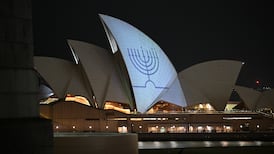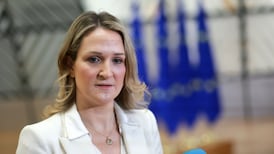It was the launch of a scholarly biography on his father, WT Cosgrave, but it was his son, former taoiseach Liam Cosgrave, who stole the show. He mounted the stage at the Royal Irish Academy (RIA) on Dawson Street last night unaided and with a spring in his step.
In a quip early in his address surveying the breadth of his father’s nation-building career and the four years work that went into the biography, Mr Cosgrave (94) said: “I never thought I’d see today, never mind see the book.”
He said that Judging WT Cosgrave by Michael Laffan and published by the academy was "a superb book" and the result of exhaustive and meticulous research. "It traces the long career of a man who certainly never wanted his life written but I felt that it was necessary to do so," said Mr Cosgrave.
He recounted his father’s career from 1905 when he joined Sinn Féin and up to 1913 when he joined the Irish Volunteers – but not the Irish Brotherhood because he did not believe in secret societies. After 1916 and the War of Independence, he became head of government during the Civil War.
There were several hundred people in the RIA, including Dr TK Whitaker, former chief justice Tom Finlay, several retired senior government officials, including Frank Murray, his principal private secretary when taoiseach, Dermot McCarthy, former secretary general of the department of the taoiseach, Dermot Gallagher, former secretary at the Department of Foreign Affairs, and a host of former ministers from Fine Gael and Fianna Fáil.
While in power, WT Cosgrave had felt obliged to take “strenuous action against Irregulars” (anti-Treaty IRA men during the Civil War) because “an edict went out that deputies (TDs), ministers and judges should be shot on sight”, said Mr Cosgrave. One TD had been shot and his father ordered the execution of four IRA prisoners. “It was effective because no further TD was shot,” he said.
As president of the Executive Council – in effect taoiseach – WT Cosgrave presided over Ireland’s first steps on the international stage as an independent country, his son said. After all that, he handed over power to those he had defeated in the Civil War, believing in the primacy of the ballot box.
The theme of inclusivity and the primacy of parliamentary democracy over militarism infused a speech by Taoiseach Enda Kenny, who reaffirmed his commitment to a shared marking of the centenary of 1916. Noting that both Fine Gael and Fianna Fáil were parties of the Rebellion, he nonetheless praised the achievement of the Irish Party.
Mr Kenny said that Ireland owed WT Cosgrave a debt and the greatness of his achievement had been overlooked. The process of acknowledgement was begun in 1996 by Irish Times Political Editor Stephen Collins with his book, The Cosgrave Legacy, said Mr Kenny.
WT Cosgrave had been “an uncompromising even ruthless advocate of the people’s right to decried their own fate,” said Mr Kenny. “On this point he would remain consistent throughout his entire career.”
Mr Kenny said that biographer Michael Laffan was fair and even-handed in his treatment of the Civil War years. Both the biography and the Taoiseach referenced the bitterness that poisoned politics for generations after the Civil War.
“But all the while,” said Mr Kenny, “WT Cosgrave and his small team of minister had the enormous task of setting up, defending and sustaining the still new, and still fragile Free State. It was a Herculean task which they embraced with fearless, selfless courage and vision. No government in our history has ever faced such a daunting task and no government has never been so successful in what it actually achieved.”
He said Prof Lafan’s book was comprehensive. “It’s all there in the book and what a story it is,” commented Mr Kenny.
“Within a matter of months [of independence],” said Mr Kenny, “the new government had drafted and enacted our first constitution, a modern rights-based constitution, most of the key elements of which survived into our present Bunreacht na hEireann.
“The there was the task of physically rebuilding the country after the devastation of the Civil War and the huge drain it had on the fragile finances of a new State. There was the building and the rebuilding of the rail lines and the bridges, of roads and public buildings and much more. . . “
In his concluding remarks, Liam Cosgrave praised his wife Vera “for the care and attention” she gave his father during his declining years. Author Michael Lafan thanks Mr Cosgrave for suggesting the book and for giving him unfettered access to his father’s papers but never tried to control what was written.
“As a people,” said Prof Lafan, “we need to know where we have come from and in particular we need a 20th century historical narrative that does more than glorify conflict - one that lays an appropriate, and thereby critical, emphasis on State building, on the consolidation of Irish democracy. And this may be particularly important now that, at least, we seem to be nearing the end of Civil War politics.”
Mr Kenny presented his predecessor in office with a framed cheque, signed by Mr Cosgrave’s father and dated March 3rd 1922. It was cheque No 1 from the “Dail Eireann” account, paid to the “chief of inspection” and was written in WT Cosgrave’s capacity then as Minister for Local Government. It was for £428.17.1p













